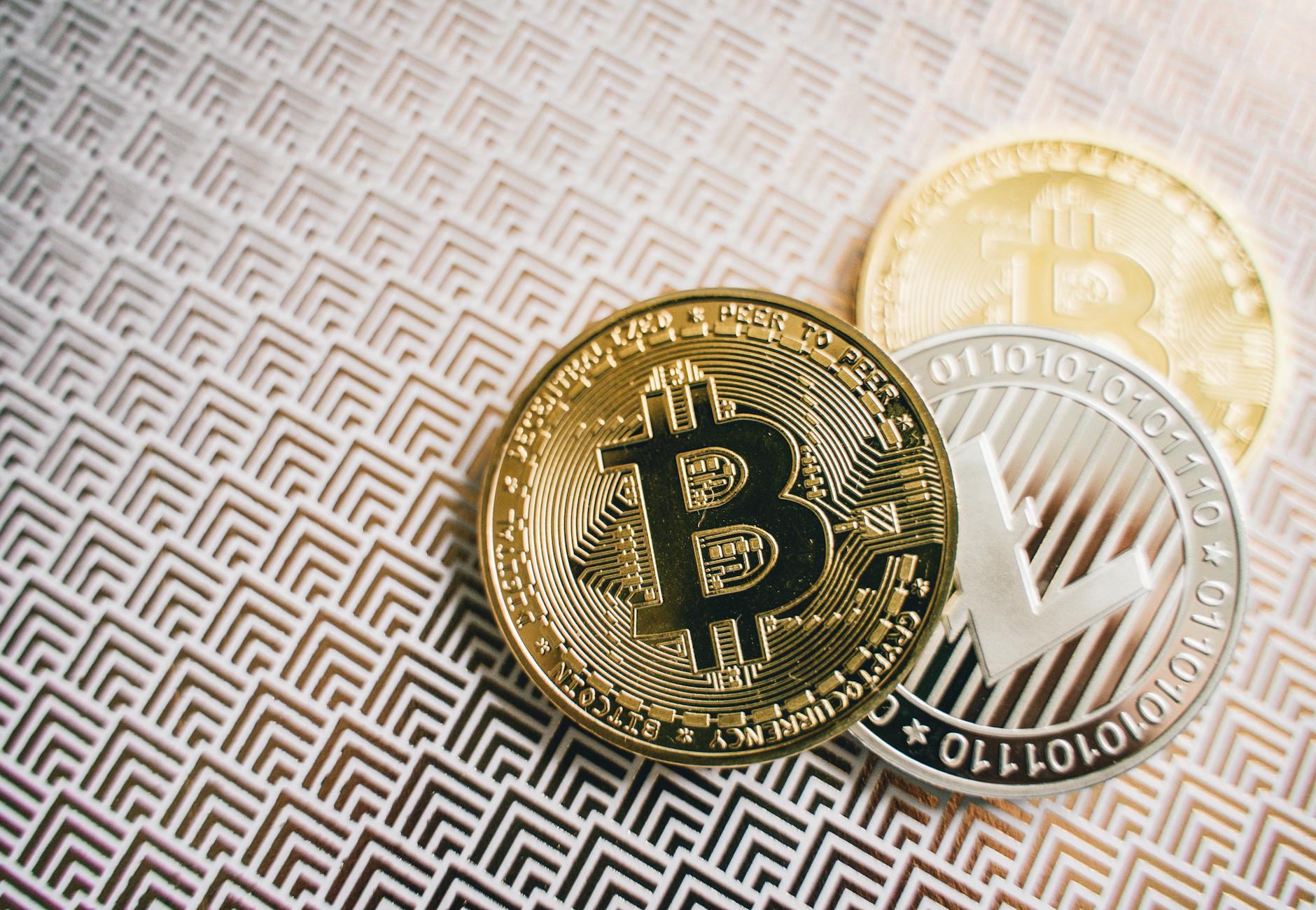US Tariffs Raise Bitcoin Miner Costs: The real mining threat
- Get link
- X
- Other Apps

US Bitcoin Mining Faces Headwinds: Tariffs, AI Competition, and the Future of Hashrate
📌 The Shifting Sands of Bitcoin Mining: From China to the US and Back Again?
The global landscape of Bitcoin mining has undergone a dramatic transformation in recent years. Following China's crypto ban in the summer of 2021, a significant portion of the mining industry was forced to seek new havens. Kazakhstan, Russia, and Canada emerged as popular destinations, but the United States ultimately became the primary beneficiary. Over the past four years, the U.S. has risen to become the dominant force in Bitcoin hashrate, surpassing all other countries.
Bitcoin (BTC) 7-Day Price Analysis with daily data. Market indicators: Hashrate, Tariffs, ASIC production, AI competition. US dominance challenged?
However, this golden age of American Bitcoin mining may be facing new challenges. The policies of the Trump administration, particularly the proposed tariffs on imported ASICs (Application-Specific Integrated Circuits), threaten to increase costs for U.S.-based miners. These tariffs, initially unveiled on April 2nd but temporarily paused, could significantly impact the industry's expansion within the country.
The Impact of Tariffs on ASIC Imports
ASICs are specialized, high-powered computers essential for Bitcoin mining. The manufacturing of these machines is concentrated in Southeast Asia, where tariffs ranging from 10% to 50% could apply. While these taxes aren't expected to make ASIC imports entirely prohibitive, they will likely slow down the rapid growth that the U.S. mining industry has experienced. This shift raises questions about the long-term dominance of the U.S. in the global hashrate landscape.
Taras Kulyk, CEO of Synteq Digital, notes that while the U.S. will remain a major source of hashrate, its dominance is likely to erode as Bitcoin mining becomes more globally distributed. He points to emerging projects in countries like Pakistan, which recently announced plans to dedicate two gigawatts of power to Bitcoin mining, and Ethiopia, as evidence of this diversification.
📌 Beyond Tariffs: Other Factors Influencing Bitcoin Mining Location
Tariffs are just one piece of a complex puzzle. Other factors, such as the increasing demand for data centers dedicated to Artificial Intelligence (AI) and the diminishing availability of ideal U.S. locations for mining facilities, are also playing a significant role in miners' location decisions. The rise of AI presents a particularly potent challenge, as AI-focused data centers can outcompete miners for resources.
Short-Term Relief, Long-Term Adjustments
⚖️ In the short term, U.S.-based miners can mitigate the impact of tariffs by leveraging a robust secondary market to acquire used mining rigs. However, ASIC manufacturers are also exploring options for producing their machines domestically. This potential shift could help to offset the negative effects of tariffs and bolster the U.S. mining industry in the long run.
Despite the challenges, the overall sentiment suggests that tariffs are not a fatal blow to U.S. Bitcoin mining. Instead, they represent a new variable that the industry must adapt to in its constant pursuit of efficiency and profitability.
📌 Adapting to the New Reality: Miner Strategies and Market Dynamics
The initial announcement of tariffs in April caused a flurry of activity as miners and logistics companies rushed to import ASICs before the policy took effect. However, the White House's decision to postpone the implementation provided some breathing room. Now, mining firms are adjusting to the expectation of higher ASIC import costs. The long-term outlook for tariffs remains uncertain, pending trade negotiations and potential court rulings.
⚖️ Lauren Lin, head of hardware at Luxor Technology, emphasizes that it could take months, or even years, to reach a definitive resolution on tariffs. In the meantime, the ASIC secondary market remains active, and miners are continuing to operate, albeit with increased scrutiny of policy changes.
The Impact on Electrical Hardware
A lesser-known consequence of the tariffs is their impact on imported electrical hardware, such as transformers. These components, primarily manufactured overseas, were already difficult to source before the introduction of tariffs. This has added another layer of complexity and frustration for miners, potentially having a more significant impact than the tariffs on ASICs themselves.
Jeff LaBerge, head of capital markets and strategic initiatives at Bitdeer, remains optimistic, viewing the initial tariffs as a starting point for a policy that will likely evolve over time. He anticipates a reasonable outcome in the long run.
📌 "Made in America": The Push for Domestic ASIC Production
The ASIC market, valued at $30 billion, is dominated by Bitmain, a Chinese company whose machines power approximately 80% of Bitcoin's hashrate. Competitors include MicroBT, Canaan, and Bitdeer. These companies primarily manufacture their ASICs in Southeast Asia, but there is a growing trend toward domestic production.
🚀 MicroBT already has a facility in Pennsylvania, and Bitmain announced plans to launch a new production line in the United States. Canaan has also completed a U.S. trial run, demonstrating its capacity to build ASICs domestically if desired.
The tariffs appear to be achieving one of their intended goals: incentivizing ASIC manufacturers to expand their operations in the United States. Canaan acknowledges that while U.S. production is more expensive, it offers advantages in terms of proximity to customers and reduced supply chain risks. The company is currently considering building a larger U.S.-based facility.
Bitdeer sees the situation as an opportunity to gain market share, aiming to migrate as much production as possible to the U.S. Bitdeer has mining operations in Texas and Ohio, giving it a natural outlet for its domestically produced ASICs.
While Bitmain has not announced new plans to ramp up U.S. production since the tariffs were introduced, it is likely to face pressure to demonstrate its commitment to the Trump administration's goals.
Expanding production capacity in the U.S. is expected to be a slow and costly process. Canaan emphasizes that the decision to scale U.S. manufacturing depends on cost reduction and demand from U.S. customers, as well as the potential for lower tariffs on products from Southeast Asia.
📌 The Future of US Hashrate: Slower Growth and New Challenges
Despite the adaptation of miners and the potential for increased domestic ASIC production, the U.S.-based hashrate, currently accounting for over 40% of the global total, is unlikely to maintain its previous rate of growth. Tariffs do exert an influence, as the highly competitive nature of Bitcoin mining necessitates constant cost optimization. The choice between establishing a new mining facility in Texas or Ontario may be swayed by the presence of tariffs.
Data Centers dedicated to HPC and AI
A more significant factor is the increasing difficulty of finding suitable locations for new Bitcoin mining operations in the U.S. "Most of the low-hanging fruit has been picked," as LaBerge notes.
Competition from data centers dedicated to high-performance computing (HPC) for AI is also intensifying. These centers, backed by major players like Microsoft, Meta, and Google, are likely to win bidding wars for sites suitable for both mining and HPC. HPC data centers offer higher profits, leading some Bitcoin mining firms to diversify into AI.
Kulyk predicts that "HPC chasing electrons is the main theme for the next two to 10 years." He suggests that Bitcoin miners may become acquisition targets or be absorbed into the broader digital compute landscape. This trend is expected to be primarily confined to the U.S. due to the technical sophistication required for HPC centers and the geopolitical dynamics of the AI arms race.
For U.S.-based miners, the future may lie not in expanding megawatts but in improving efficiency. The majority of mining rigs currently in operation have an efficiency of 30 joules per terahash (J/TH) or higher, making them marginally profitable at best. The latest generation machines from Bitmain and Bitdeer are closer to 10 J/TH in efficiency, highlighting the potential for significant improvements. LaBerge estimates that refreshing these older rigs represents a $4-6 billion annual market opportunity over the next three to five years.
📌 Key Stakeholders’ Positions
The positions of key stakeholders are summarized below, highlighting their arguments and potential impacts on investors:
| Stakeholder | Position | Impact on Investors |
|---|---|---|
| Trump Administration | Tariffs to boost US industry. | 📈 Increased ASIC costs, domestic production. |
| ASIC Manufacturers | Considering US production. | Geographic proximity, supply chain reduction. |
| Bitcoin Mining Firms | Adapting, diversifying into AI. | 🆕 Efficiency focus, new revenue streams. |
📌 🔑 Key Takeaways
- Tariffs on ASICs are likely to slow down the expansion of the Bitcoin mining industry in the U.S., though not halt it entirely. This could lead to a more globally distributed hashrate in the coming years.
- Competition from data centers dedicated to AI presents a significant challenge to Bitcoin miners, particularly in the U.S., where the AI industry is rapidly expanding.
- ASIC manufacturers are incentivized to scale up their operations in the U.S. to mitigate the impact of tariffs, potentially leading to a more localized supply chain.
- The future of Bitcoin mining in the U.S. may lie in improving efficiency rather than simply expanding capacity, creating a significant market opportunity for next-generation mining rigs.
- Uncertainty remains regarding the long-term outlook for tariffs, pending trade negotiations and potential court rulings.
The narrative surrounding U.S. Bitcoin mining dominance is undoubtedly shifting. While the U.S. continues to hold a significant portion of the global hashrate, it's naive to assume the current trajectory will continue unabated. The convergence of tariffs, the relentless expansion of AI-driven data centers, and increasing competition for prime locations point toward a future where the U.S. mining sector will likely consolidate, focusing on efficiency gains and strategic diversification into AI-related compute. This shift won't be a sudden collapse, but rather a gradual rebalancing of power. Ultimately, the future favors miners who can leverage innovation and adapt to the dynamic landscape, as a reliance on simply low-cost energy will no longer be a guaranteed advantage. We will see a more nuanced, technologically advanced market in the coming years.
- Monitor regulatory developments regarding tariffs on ASICs and other electrical equipment imported from Southeast Asia, as these policies can significantly impact mining profitability.
- Track the expansion of AI data centers in regions with significant Bitcoin mining operations to assess potential competition for resources and investment opportunities in HPC.
- Analyze the financial performance and strategic initiatives of publicly traded Bitcoin mining companies, focusing on their diversification efforts and investments in more efficient mining technologies.
- Consider investing in companies that are developing or manufacturing next-generation ASIC miners with improved energy efficiency, as these machines are likely to become increasingly valuable.
Crypto Market Pulse
June 24, 2025, 16:20 UTC
Data from CoinGecko
| Date | Price (USD) | Change |
|---|---|---|
| 6/18/2025 | $104683.42 | +0.00% |
| 6/19/2025 | $104722.70 | +0.04% |
| 6/20/2025 | $104690.65 | +0.01% |
| 6/21/2025 | $103290.11 | -1.33% |
| 6/22/2025 | $101532.57 | -3.01% |
| 6/23/2025 | $100852.58 | -3.66% |
| 6/24/2025 | $105511.62 | +0.79% |
| 6/25/2025 | $105347.36 | +0.63% |
▲ This analysis shows BITCOIN's price performance over time.
This post builds upon insights from the original news article, offering additional context and analysis. For more details, you can access the original article here.
- Get link
- X
- Other Apps

